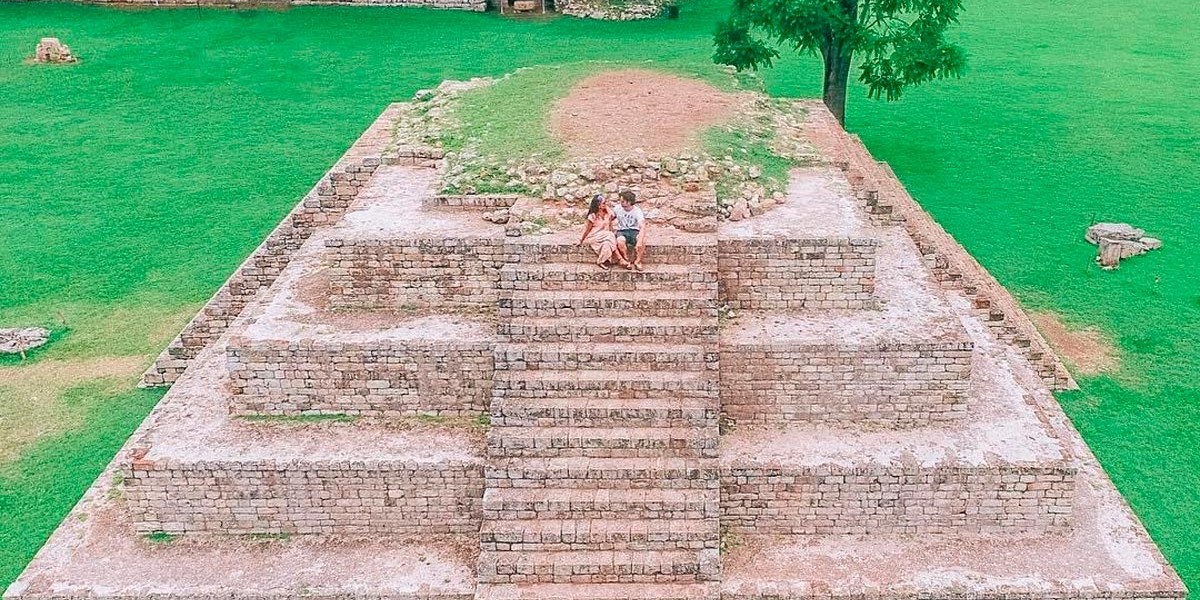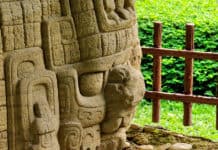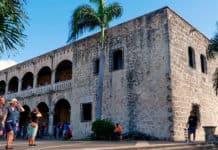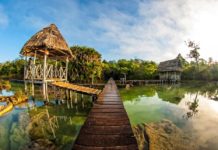
The enigmatic legacy of the Mayan civilisation thrives in Guatemala, Belize, Honduras, and El Salvador. Embark on a multi-destination journey that allows you to fully immerse yourself in the history of this captivating civilisation, along with its rich traditions and culture. It’s an exhilarating adventure tailor-made for history and archaeology enthusiasts.
The ancient Mayan city of Tikal, located in the municipality of Flores, in the department of Petén, represents the most extensive pre-Hispanic settlement in Guatemala. Its population may have reached 100,000 inhabitants during its period of most extraordinary splendour. Tikal boasts around 5,000 pre-Hispanic structures within an area of approximately 16 km², of which only 5% have been restored and are open to visitors. The site’s stelae and altars tell a rich historical narrative, reflecting a direct succession of the royal dynasty. Recognised by UNESCO in 1979 for its exceptional cultural and natural significance, Tikal became the first combined Cultural and Natural Heritage of Humanity site. It showcases a remarkable sample of humid subtropical rainforest, home to numerous species of flora and fauna. Indeed, it is a spectacle.
When planning your excursions to Belize, notice the ruins of Xunantunich. It is home to the country’s second-tallest pyramid, steeped in mystical tales from the ancient civilisation that used to inhabit it. The name Xunantunich could be translated as ‘maiden’ or ‘woman of stone,’ legend has it that a ghostly woman used to appear at this site many centuries ago. This enclave is surrounded by breathtaking natural beauty.
In Honduras, the renowned ruins of Copán, situated in the western part of the country, in the Department of Copán, just 14 kilometres from the El Florido border with Guatemala, stand out prominently. Copán Ruinas has been celebrated for its magnificent Mayan ruins for many years and was designated a UNESCO World Archaeological Heritage Site in 1980. Copán Ruinas is called the ‘Paris of the Mayan world’ in Central America today. It’s another site steeped in history from every angle.
In El Salvador, there are two must-visit destinations: Joya de Cerén Archaeological Park, an icon of pre-Hispanic culture that offers a glimpse into the daily life of the Mayans. Declared a World Heritage Site in 1993, it is often referred to as the ‘Pompeii of America,’ drawing a comparison to the archaeological site in Italy, making it an essential destination in El Salvador. El Tazumal Archaeological Park is a significant and sophisticated Mayan settlement that thrived between 100 and 1200 AD. After centuries of habitation, the site was eventually abandoned around 1200 A.D. and now stands as a treasure trove of history in Chalchuapa, located in the department of San Ana.






